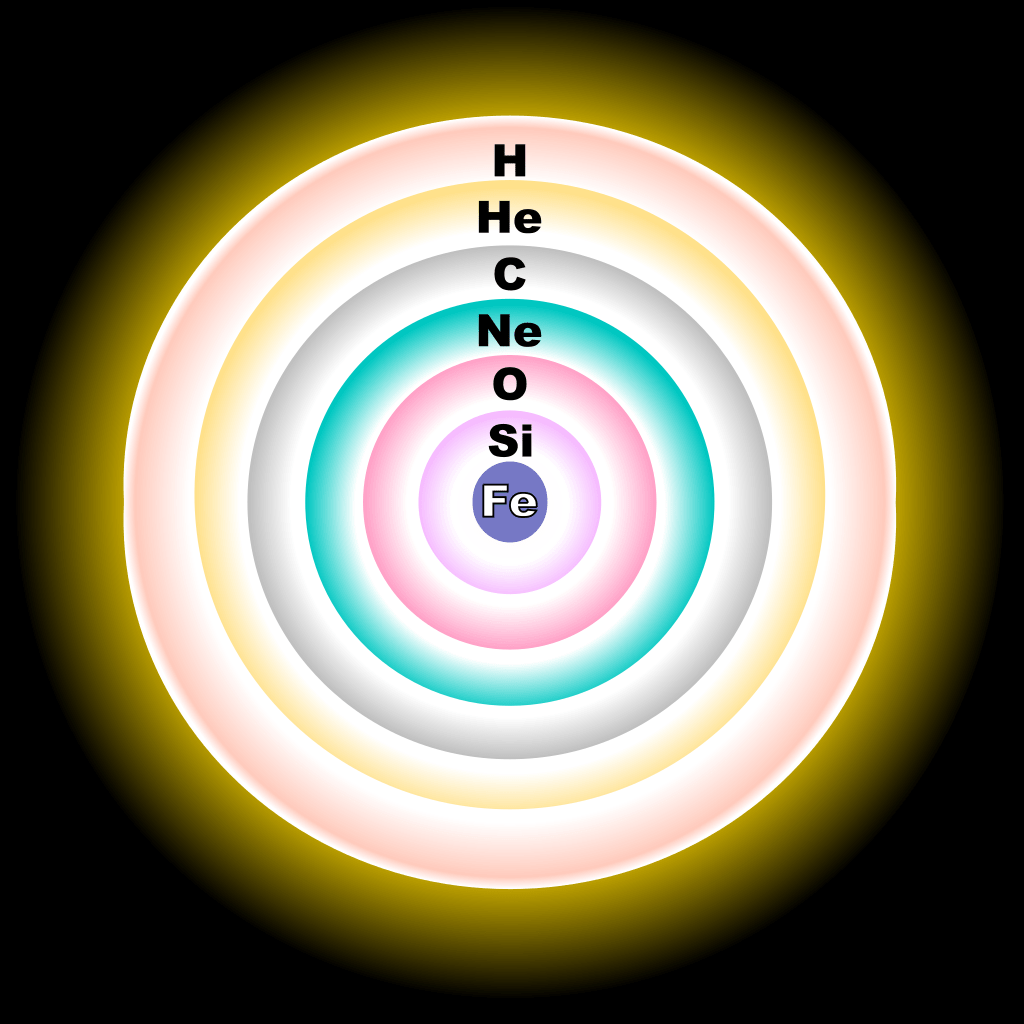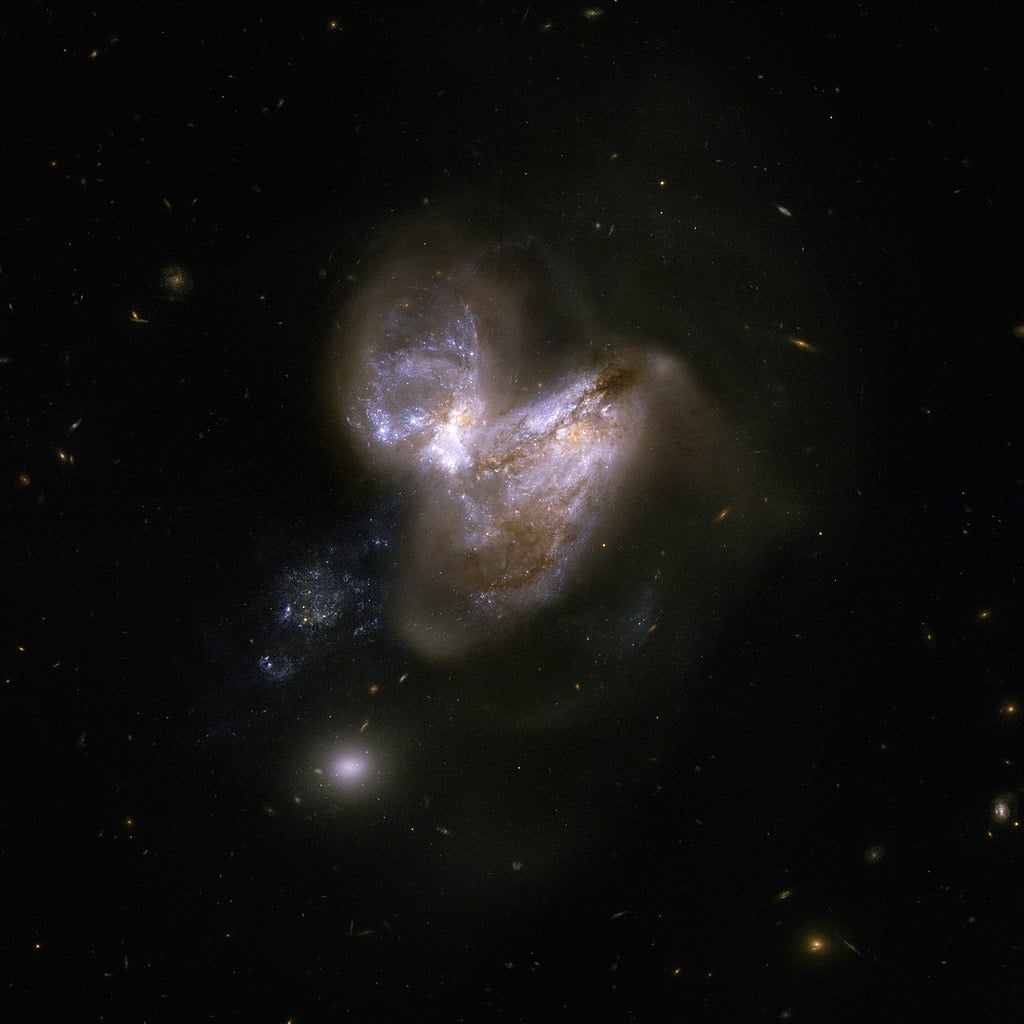A supernova is a brilliant end to a giant star. For a brief moment of cosmic time, a star makes one last effort to keep shining, only to fade and collapse on itself. The end result is either a neutron star or a stellar-mass black hole. We've generally thought that all stars above about ten solar masses will end as a supernova, but a new study suggests that isn't the case.
Unlike the famous Type Ia supernovae, which can be caused by the merger or interaction of two stars, large stars undergo what is known as a core-collapse supernova. Stars survive through a balance of heat and pressure against gravity. As more elements are fused, a large star must generate heat by fusing ever heavier elements. Eventually, this forms a layer of regions where different elements are fused. But that chain can only be carried up to iron. After that, fusing heavier elements costs you energy rather than releases it. So, the core collapses, creating a shock wave that rips the star apart.
In models of large dying stars, core-collapse supernovae occur for stars above 9 - 10 solar masses, up to about 40 - 50 solar masses. Above that mass, stars are so massive that they likely collape into a black hole directly, without becoming a supernova. Extremely massive stars, on the order of 150 solar masses or more, might explode as a hypernova. These beasts don't explode because of a core-collapse, but rather an effect known as pair instability, where colliding photons created in the core create pairs of electrons and positrons.
This new study suggests that the upper mass limit for core-collapse supernovae might be much lower than we thought. The team looked at the elemental abundances of a pair of colliding galaxies known as Arp 299. Because the galaxies are in the process of colliding, the region is a hotbed of supernovae. As a result, the elemental abundances of Arp 299 should be largely dependent on the elements cast off in supernova explosions. They measured the abundance ratio of iron to oxygen, and the ratios of neon and magnesium to oxygen. They found that the Ne/O and Mg/O ratios were similar to that of the Sun, while the Fe/O ratio was much lower than solar levels. Iron is cast into the universe most efficiently by large supernovae.
The ratios the team observed didn't match standard core-collapse models, but they found that the data matched supernova models well if you excluded any supernova over about 23 - 27 solar masses. In other words, if stars collapse into black holes above about 27 solar masses, then models and observations agree.
This work doesn't conclusively prove that the upper mass limit for supernovae is smaller than we thought. It's also possible that supernovae produce higher levels of neon and magnesium than models predict. Either way, it is clear that we still have much to learn about the last dying gasps of large stars.
Reference: Mao, Junjie, et al. " Elemental Abundances of the Hot Atmosphere of Luminous Infrared Galaxy Arp 299." *The Astrophysical Journal Letters* 918.1 (2021): L17.
 Universe Today
Universe Today


